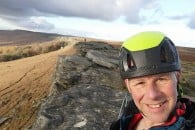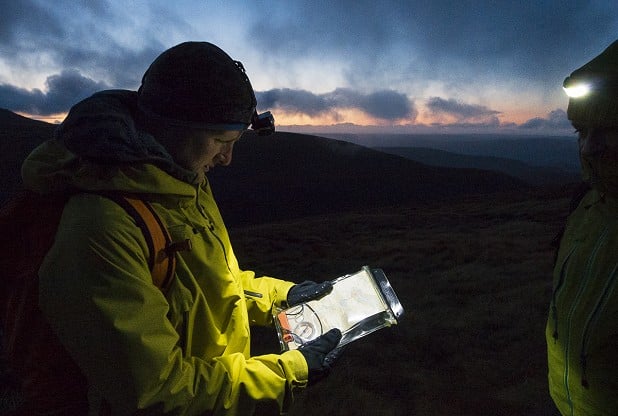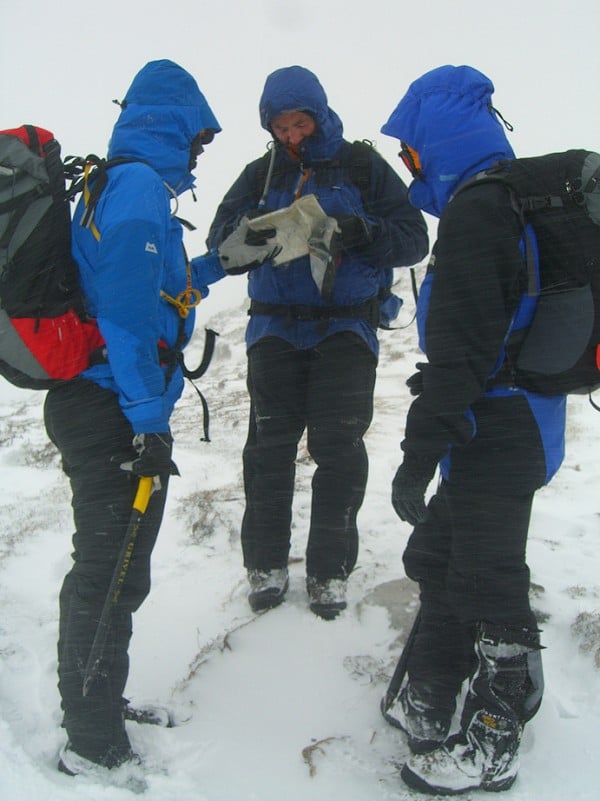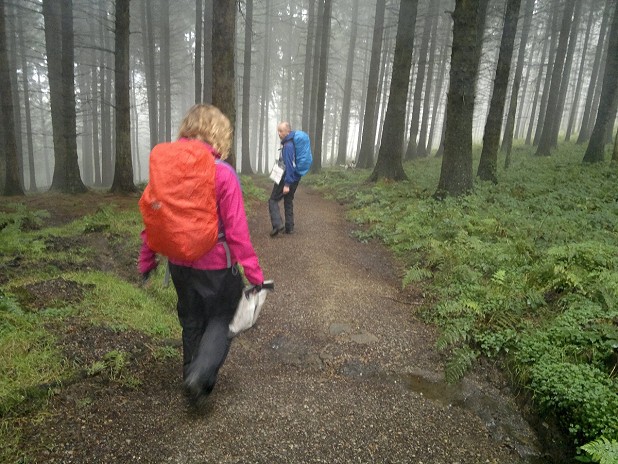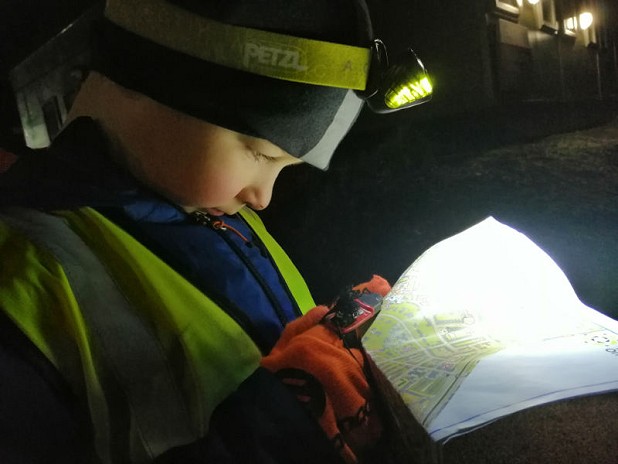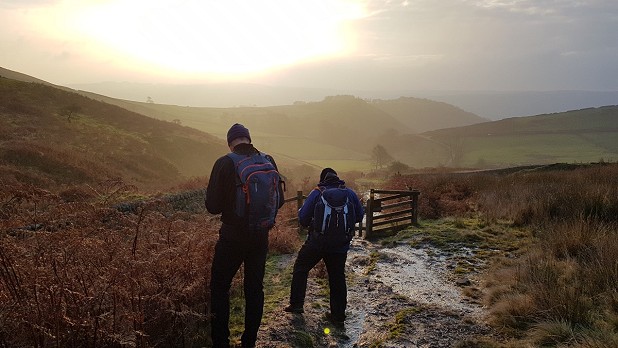10 Ways to Get Better at Map Reading
It doesn't matter how long you have known how to navigate, everyone will still make a map reading error from time to time. I've been working and leading people out in the hills since 1991, yet I still make mistakes. A recent guided walk with a group made me reflect on my own my practice, and in turn here are ten top tips to make these moments a little less frequent.
1. Never carry a whole map
Print what mapping you need for the day onto an A4 Sheet of paper, and slip it into a waterproof case. Having to unfold a full-sized map and find the right place every time is a faff: the more you have to faff, the more likely you will try and just wing it. And while I accept that you can have a full-sized map ready-folded, it will never be as good as the convenience of having it on an A4 sheet, which will fit into any pocket. If you can't print off your own A4 sheets at home, then use the simple paper maps (protected inside a map case) which fold far more readily and easily than laminated maps.
2. Don't use the same tool for every job
Get used to using different maps: Harveys as well as OS maps. At the very least get used to using the OS 1:50K as well as the 1:25K scale maps. The 1:25K maps provide a high level of detail which can be particularly useful in agricultural countryside where there are lots of field boundaries and/or plantations for example, but they do have their limitations. The 1:50K maps are great for giving you a very easy to see perspective of how the land lies. The contour lines and streams are very solidly marked and the maps are not so cluttered with detail that you can't see the wood for the trees. For days out on the mountain, the 1:50K maps are my go-to choice. Whichever map you don't feel comfortable with is likely to be the one that you need to start practising with.
3. Anticipate where you'll cock up
When you plan your route have a think about where the route might get tricky. Anticipate where you might get lost. Often I simply use a 1:50K map for the majority of my walking which I can easily print onto one side of A4. But on the reverse side of the same sheet, I have the tricky navigation section printed in 1:25K. That way I have the benefit of both map scales to hand.
4. Take away the pressure
Ideally you will be familiar with the route or terrain beforehand if you're leading a group, but there are always those occasions when you decide to add more to the day, or maybe unforseen factors determine that you need to cut the day short. And sometimes you just head out with a gang of people on a totally new walk! So take the pressure off yourself, and warn people at the start of the day that if you get your map out it's not because you're lost, but because you don't want to get lost.
5. Take time to read your maps
When you're out walking on your own, allow time to take breaks to simply read the map. Even on walks I'm familiar with, I find it fun to see how the map depicts the ground around me. I break the land down into macro and micro worlds. The macro is the big obvious things – easily identified hills, wood-lines and landmarks such as radio masts. From these I then work out how the finer features are shown on the map, seeing where these are relative to those bigger features previously identified. Doing this as often as possible helps you gain an affinity with maps. And remember, do this with all scales of maps.
6. Share the love
See one, do one, teach one. My missus is a medic and apparently this is how medicine is learned. Transfer it to navigation and there's also a lot of truth in this concept. Since teaching people map and compass skills my own skills have improved loads. Take the time to teach others how to navigate, and you'll find your own skills come on in leaps and bounds.
7. Orientate your map to the ground
Don't read your map like it's a book. Maps are made up of symbols, they're not words, so you don't need to hold them the 'right way' up. Get used to orientating your map to the ground (maybe like the GPS in your car does), so that what is in front of you on the ground is at the top of the map, and what is behind you is at the bottom of the map. The simplest way to do this is to have the top of you map aligned with the red arrow tip of your compass; this is called orientating your map to north.
8. Collecting features
When you're out and actually looking at a map, think about what you should be seeing as you go along. The technical term for this is "collecting features". Chances are you will then be reassured as you see these anticipated features, but more importantly if you begin to see or experience things that you didn't expect to see you will know you've probably gone wrong. This is what I call the claxons sounding! Also, have an idea of what should happen if you go too far. This is called a catching feature. For example if you go too far the gradient may change dramatically, or you'll come to a wall, or to a stream etc.
9. Ignore the claxons at your peril
And when you hear the claxons sounding don't ignore them: stop! Stop, and take the time to look at your map. With an orientated map in your hand look around you and figure out what is where. Time having been spent practising looking at macro and micro features will pay dividends now. What's big and obvious? Where is that on your map? Now start working your way back to your location. Don't talk yourself into denying that you're lost: you'll only compound the error! Take your time to relocate yourself and only justify your findings if you have two or three items of hard evidence to back them up.
10. How bad can it be? Relax
Worse case scenario – you just can't relocate yourself. Ok, I'm not a huge fan of using a GPS out in the hills and certainly wouldn't want to rely on them, but I do at least have OS Locate loaded to my phone. This is a free app and will give you a six figure grid reference even when there is no signal. So, if you head out armed with this back-up to hand, you can head out relaxed. And if you're relaxed, there's less chance you will need this back up in the first place!
About Will Legon
Will Legon of Will4Adventure works professionally in the outdoors as a mountain leader and as a climbing instructor. As well guiding walks in the hills and mountains of the UK, Will also runs hill skills and navigation courses in the Peak District and Snowdonia.
- For more info or to book a course see Will4Adventure.com
